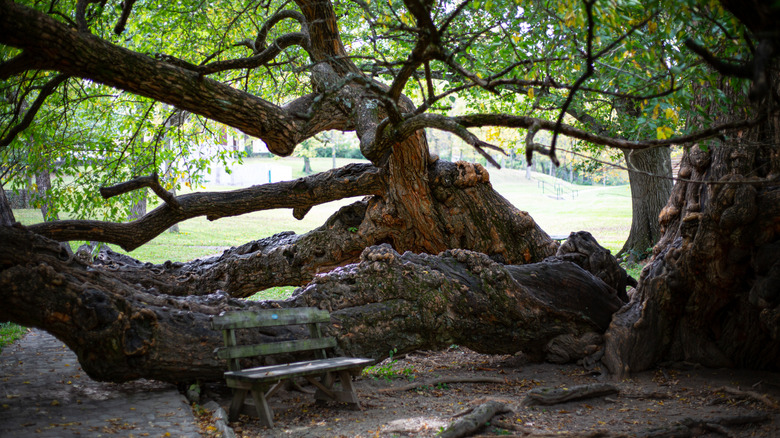Exploring the Rich History of Old Fort Harrod State Park
Kentucky is home to a variety of state parks that offer a glimpse into the region’s diverse history. Among these, Old Fort Harrod State Park stands out as a unique destination where visitors can experience both prehistoric and pioneer history. The park not only features remnants of ancient animal bones but also showcases a reconstructed pioneer settlement that provides insight into early American life.
Old Fort Harrod State Park is located at the site of the first sustained pioneer settlement west of the Allegheny Mountains. The settlement was originally established in 1775 as Harrodstown, and a scale replica of the town now exists on the grounds. Visitors can explore an original 19th-century mansion, view early American artifacts, and walk through the oldest cemetery in Kentucky. Within the park, there is also an Osage orange tree that has been standing since the time of the fort’s establishment. This tree is considered the “Unofficial National Champion” as it is the largest of its kind in the country, though it does not hold the official title due to its split trunk.
The park is named after James Harrod, who led the initial group of settlers to the site in 1774. A small fort was built at the location, but it was abandoned when Dunmore’s War began. Harrod returned in 1775 with more settlers to establish a permanent town, just as the American Revolution started. During this time, Kentucky became a battleground for conflicts between settlers and British-backed Native Americans. After the war, the fort served various purposes, including being used as a school and a jail. It eventually fell into disrepair, and the state park and fort replica were created in 1927 to honor the site’s historical significance.
Visiting Old Fort Harrod State Park
Old Fort Harrod State Park is easily accessible, located about 40 minutes by car from the Blue Grass Airport in Lexington, Kentucky. Known for its Southern charm and delicious food, Lexington serves as a great starting point for exploring the park. While there is an entrance fee to visit the fort, other parts of the 15-acre park, including the cemetery and Lincoln Marriage Temple, are free to explore.
Inside the wooden palisades of the reconstructed fort, visitors can see what life was like in the 1700s. The cabins and blockhouses are filled with period-accurate tools and furniture, offering a vivid portrayal of pioneer life. Regular reenactments take place at the fort, showcasing activities such as soap-making and blacksmithing. An annual event called the Fort Harrod Settlement & Raid reenactment in June demonstrates an attack on the fort, providing an exciting glimpse into the past.
At the Mansion Museum, which was originally built in 1813, visitors can view a collection of artifacts that include wartime weapons and items dating back to the 15th century. Outside the fort, the Pioneer Graveyard is one of Kentucky’s oldest cemeteries, established when the fort was permanently settled in 1775. It contains the graves of the original pioneers.
Another notable feature of the park is the Lincoln Marriage Temple, a unique structure that consists of a brick church containing the log cabin where Abraham Lincoln’s parents were married. Near the park’s entrance, visitors can take photos with the legendary Osage orange tree, which stands 76 feet tall—significantly taller than the official National Champion in Virginia.
Discover More Historical Sites
After visiting Old Fort Harrod State Park, travelers can explore more historical sites in the surrounding town of Harrodsburg, Kentucky’s oldest city in the picturesque Bluegrass Region. With its rich history and charming atmosphere, Harrodsburg offers additional opportunities to delve into the area’s past.
For those interested in uncovering more hidden gems and travel tips, subscribing to a free newsletter can provide access to the world’s best-kept travel secrets. Whether you’re a history enthusiast or simply looking for a unique travel experience, Old Fort Harrod State Park offers a fascinating journey through time.



